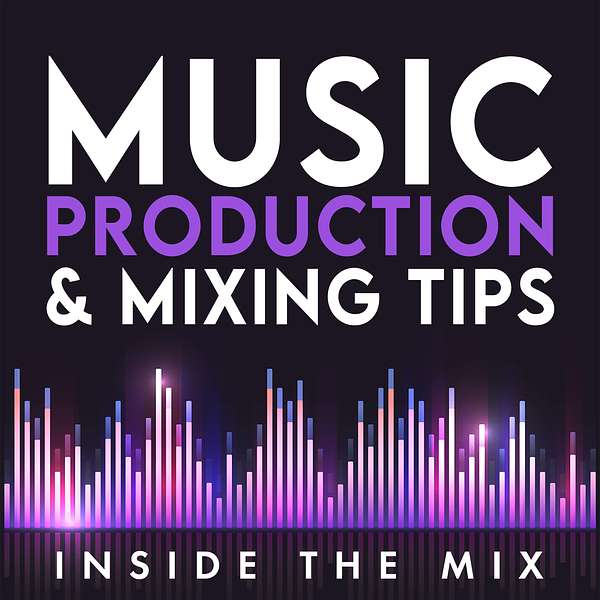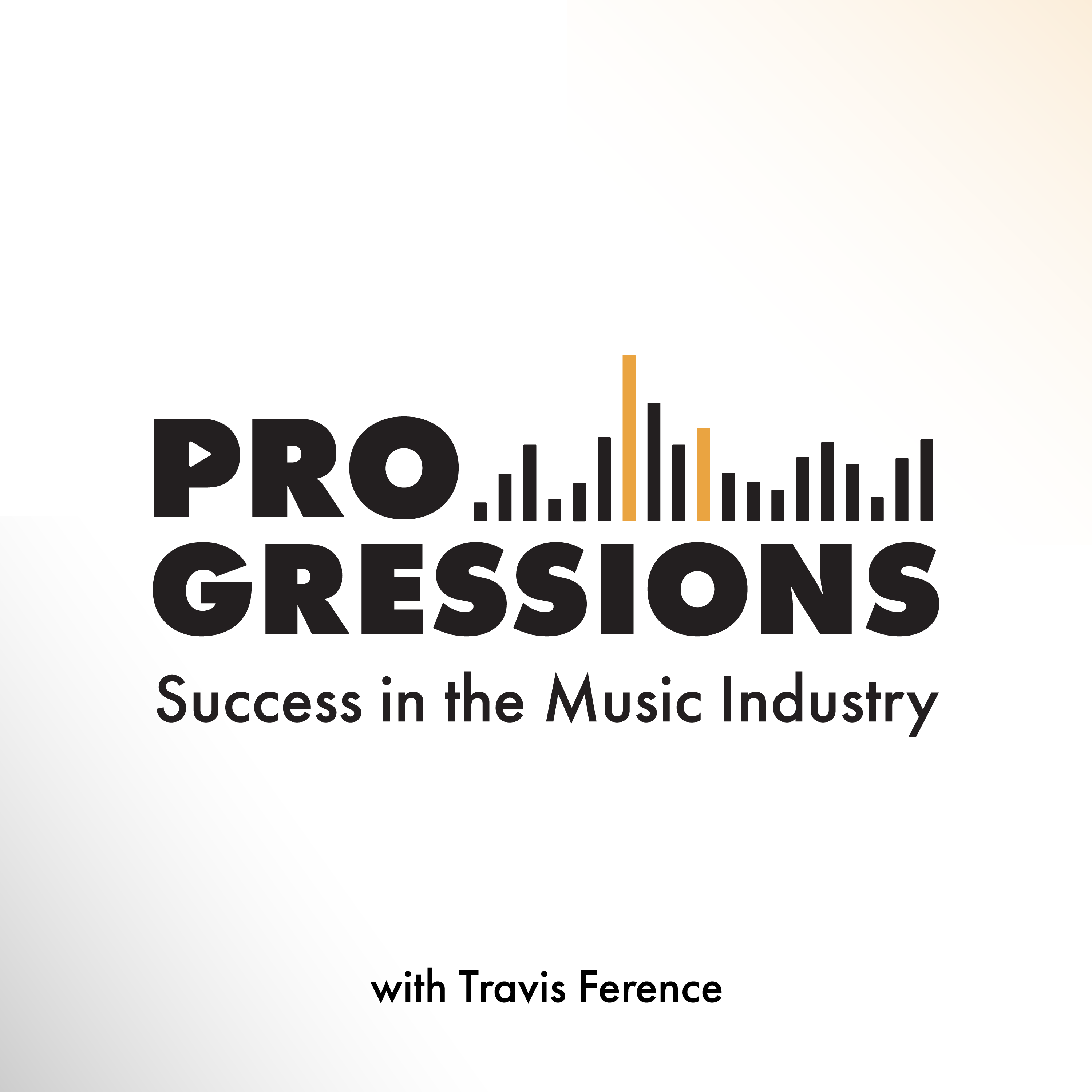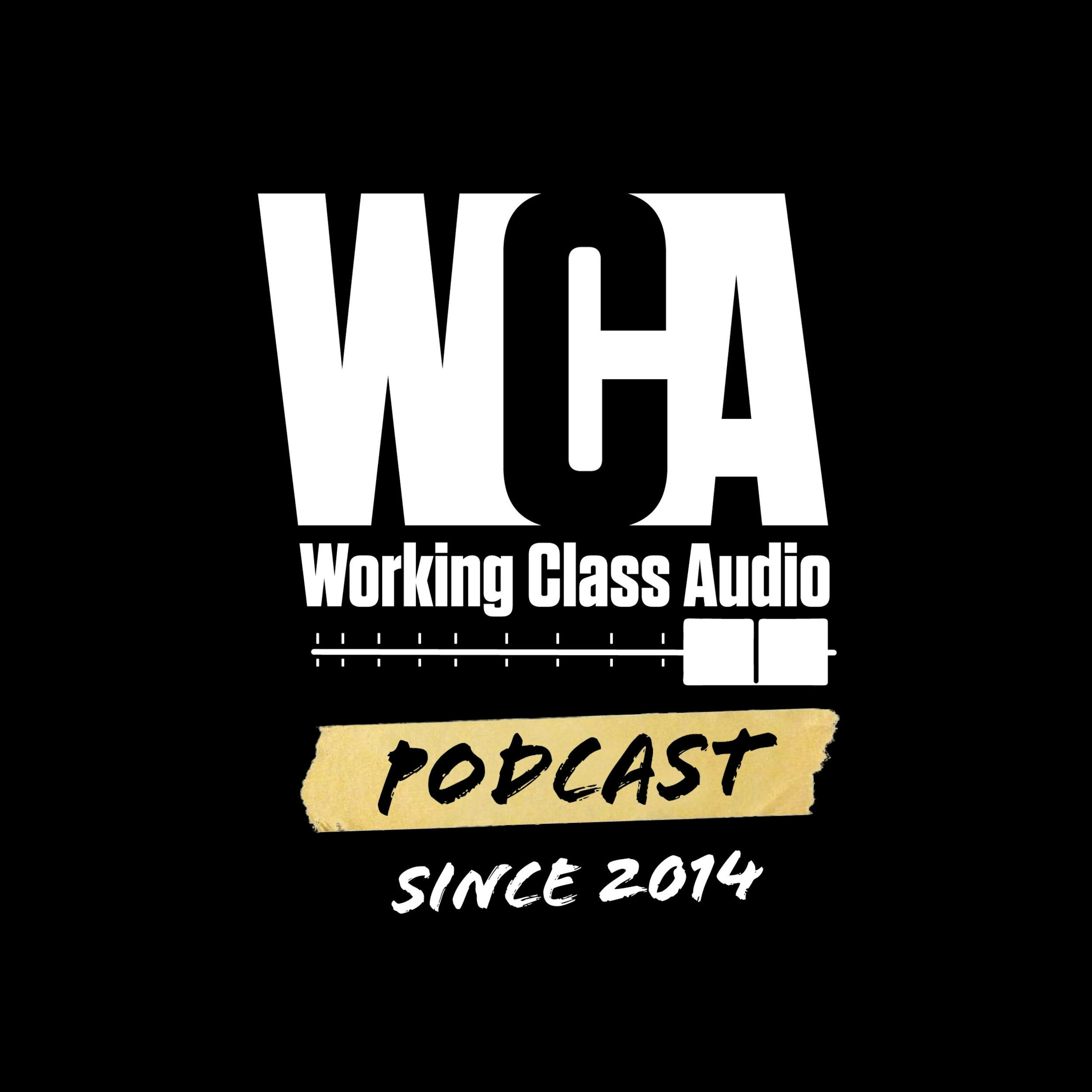
Music Production and Mixing Tips for Music Producers and Artists | Inside The Mix
If you're searching for answers on topics such as: what is mixing in music, how I can learn to mix music, how to start music production, how can I get better at music production, what is music production, or maybe how to get into the music industry or even just how to release music. Either way, you’re my kind of person and there's something in this podcast for you!
I'm Marc Matthews and I host the Inside The Mix Podcast. It's the ultimate serial podcast for music production and mixing enthusiasts. Say goodbye to generic interviews and tutorials, because I'm taking things to the next level. Join me as I feature listeners in round table music critiques and offer exclusive one-to-one coaching sessions to kickstart your music production and mixing journey. Get ready for cutting-edge music production tutorials and insightful interviews with Grammy Award-winning audio professionals like Dom Morley (Adele) and Mike Exeter (Black Sabbath). If you're passionate about music production and mixing like me, the Inside The Mix is the podcast you can't afford to miss!
Start with this audience-favourite episode: #75: How to Mix Bass Frequencies (PRODUCER KICKSTART: VYLT)
Thanks for listening & happy producing!
Music Production and Mixing Tips for Music Producers and Artists | Inside The Mix
#147: Panning Programmed Drums in a Mix: Mastering the Art of Panorama Placement
Have you ever wondered how drums should be panned? Maybe you're seeking help on the topics: panning drums in a mix, pan programmed synthpop drums, panning in Logic Pro tips, or maybe you're unsure even if synthpop drums are panned? Then check out EP 147 of the Inside The Mix podcast.
Can the art of panning transform your music production skills? Discover the secrets to creating a more immersive and dynamic mix in the latest episode of Inside the Mix. I'll guide you through the complexities of the stereo field and the nuanced techniques of panning. Whether you're just starting out or are a seasoned synthpop producer or artist, this episode is packed with practical tips to enhance the clarity, width, and depth of your tracks, giving them that polished, professional sound.
We’ll specifically focus on the crucial aspect of panning drums, a technique that can make or break the balance and dynamism of your mix. Alongside this, you'll get a sneak peek into my limited series podcast, "Logic Pro Mixing Tips for Synth Pop Producers, Artists, and Musicians," where I break down how to effectively position your instruments. This episode promises to equip you with the knowledge to make each to take the guesswork out of drum panning so you can spend more time doing what you love!
Bag your FREE Logic Pro Synthpop Mixing Template!
✸✸✸✸✸✸✸✸✸✸✸✸✸✸✸✸✸✸✸✸✸✸✸✸✸✸
Are you READY to finish more tracks in less time, without sacrificing quality?
Download your FREE Logic Pro Synthpop Mixing Template: https://www.synthmusicmastering.com/free
Listen to my new single 'Separation'
Follow Marc Matthews' Socials:
Instagram | YouTube | Synth Music Mastering
Thanks for listening and never stop making music!
Hey, inside the Mix podcast fans. It's John Burke. If you want to learn more about vocal mixing, head over to PerfectVocalsAcademycom, where you can find online courses, coaching and great YouTube content. You are listening to the Inside the Mix podcast. Here's your host, mark Matthews. Hello and welcome to the Inside the Mix podcast. I'm Mark Matthews, your host, musician, producer and mix and mastering engineer. You've come to the right place if you want to know more about your favourite synth music artists, music engineering and production, songwriting and the music industry. I've been writing, producing, mixing and mastering music for over 15 years and I want to share what I've learnt with you. Hello, folks, and welcome to the Inside the Mix podcast. If you are a new listener, make sure you hit that follow button on your podcast player of choice, and if you're watching this on YouTube, make sure you hit that subscribe button and the notification bell so you get notified whenever a new episode drops. And to the returning listeners, of course, a huge welcome back.
Marc Matthews:So, at the point of recording this episode is one day before the Euros kick off in Germany, so it's going to be Germany against Scotland, which I'm looking forward to, but, being English, obviously I'm going to be cheering on England and I cannot wait for it to start. I love tournament football. It's going to be intense tournament football and I absolutely love it, and I think England are going to go deep into the tournament. If not win it. I think the only teams that are really going to stand in their way France, portugal, possibly Germany, because it's on home turf, and I'll be cheering on Scotland as well. To be honest, I do support all the home nations in these tournaments, so I'm excited. I think England have a better chance of winning the football Euros I was going to say World Cup, then the Euros than they do of winning the 2020 tournament over the Pond at the moment, which is not looking overly promising. Yeah, I think we've got a better chance in the Euros than winning the T20. That being said, it'll be interesting to go back and look at this episode in six, eight weeks time, because I may be eating my words.
Marc Matthews:Anywho, let's dive into this episode. So this episode is going to be a section of the fourth episode for my limited series podcast, logic Pro Mixing Tips for Synth Pop Producers, artists and Musicians. So this fourth episode focuses on panning the panorama in our mix, and the section that I've taken from this episode is the panning of drums, but before we dive into that section, I just want to let you know about my free Logic Pro Synth Pop Mix template that you can download from synthmusicmasteringcom forward slash free or you can click the link in the episode description. So not only will you get that template, but I'll also email you when the limited series podcast is available on all podcast platforms and you can watch the videos on my website, all for free. Just to add to that, this limited series podcast is probably gonna be released in July or August I haven't set a definitive date on it, but if you download the free template, you will get notified when it goes live. So I've rambled on for long enough.
Marc Matthews:Now. This is a section from episode four of my limited series podcast, logic Pro Mixing Tips for Synthpop Producers, artists and musicians. So in this episode we are talking about panning, and panning adds movement and excitement to our music, to our mix, and it also adds clarity as well, because we can move instruments and audio out the way that might be conflicting with other instruments and audio. So correctly panning a track can really enhance its overall perception. It can make it sound wider, it can make it sound bigger and deeper, and maybe all three at the same time. So we can't talk about panning without talking about the stereo field, and I think the easiest way to think about the stereo field is if you close your eyes and use your mind's eye and think of the last time you were at a gig and think about where the instruments are positioned on the stage.
Marc Matthews:This is just a sweeping generalization of, like a classic rock gig let's say, this is probably the last one I went to and you'd have the main vocalist down the middle right, and then behind that you've got the drum kit and on that drum kit you've got your kick and your snare. Down the center You've got some toms panned left and right, then you've got your ride, your hi-hat, and then you you've got china and you've got your cymbals, whatever else you've got going on there. Then you might have some backing vocals to the left and to the right, and then you might have bass guitar, or rather you probably will have bass guitar right, and your bass guitar is going to be pretty much center as well, albeit your bassist is actually running about on stage somewhere he certainly wasn't the band I was in and then you've got guitars two guitars, let's say so. You can have a guitar cab left and a guitar cab right, and there may be some synthesizers or electric piano, and they're generally positioned left or right. Again, and you can think about, think of it this way if you're ever stuck with regards to where to pan something in your stereo field, just close your eyes and think, okay, last gig I went to, or if I were to position this on a stage, if I were performing, where would I them? And then that could be a starting position for you. So here we are in the Logic Pro session. And remember, folks, if you haven't got this, click on the link in the episode description. Make sure you download it so you can follow along.
Marc Matthews:And I'm going to do what I did in the previous episode. I'm going to go to File, file Project alternatives, new, and I'm going to call this pan. I'll put ban, I'm going to put pan. Here we go Pan and click, ok. So the first elements I'm going to pan are the drums.
Marc Matthews:Ok, and this is where there's a lot of discussion surrounding which perspective you should pan from. Should it be from the drummer's perspective or the audience's perspective? And I will leave that up to you. Personally, I just pan from the audience's perspective. But I've got a friend who's a drummer and he likes to pan from the drummer's perspective because he likes to air drum along to his tracks. Hey ho, whichever one works best for you in the context of your music, of your mix, personally I like to use the audience's perspective. So first I'm going to mute these other subgroups here and I'm just going to have the drums playing. I'm just going to expand the drums and they are all mono audio files for this kit and we will touch on mono versus stereo in terms of panning a bit later in this episode.
Marc Matthews:So, as I previously mentioned when I was describing the stereo width, you sort of want those most important elements down the center and then you've got the other sort of elements that you can pan to the left and to the right within control, though you don't want to go to the extreme left or the extreme right, unless that's your creative choice. Generally you could go sort of like 1.30, 10.30, something along those lines. So what I'm going to do is I'm doing this again from the audience's perspective. I've actually got two crashes, which, which is odd, but I did for this particular mix here and I did have them panned slightly left and slightly right, which doesn't really make sense, because I don't think a drummer is going to hit Well, I suppose it could hit two crashes, but in the context of this particular track that's what we did.
Marc Matthews:So I'm just going to play it and start moving these around. So I'm going to start with these crashes here and just start moving those. So that's, I've panned them. So it's sort of plus 15 to the right here. I might try actually with just the crash, the left crash, the other side, and see what that sounds like. Don't think it really adds anything, so I'm gonna move it to the other side. Probably could just get rid of that crash altogether, but let's play. I'm gonna play it again with both the left and the right crash panned to the right. In fact, if they are the same audio file, no, they are slightly different. I'll leave them in for now, but I may well take out one of those crashes.
Marc Matthews:Okay, so I don't have a ride in this mix, but in the chorus there is a tambourine which is kind of doing a similar thing. So let's move this tambourine around. I'm probably gonna move it to the left, but let's give it a go. At the moment it's centered. Okay, so that's about minus 19. I'm happy with that. So we'll leave the tambourine there.
Marc Matthews:So I'm just going to touch on the important elements at the middle quickly. So we've got the kick, the snare, they're going to stay down the middle, and then we've got a clap, and that clap is going to stay down the middle, albeit further down the line. I'm going to do some processing on that, so it's going to have some automation in the stereo field. So next we move on to the final element here and that's the hi-hat. This particular production doesn't have any toms. It's kind of like an 80s synth-pop style drum kit here which probably would have toms, but there are no toms in this one, and I'm going to pan it to the same side, to the right as the crash. So let's give that a go.
Marc Matthews:So there are actually two hats here. I did use two different types one in the verse and then one in the chorus. So we'll start with the chorus one. So let's give this a go. Yeah, I quite like that. Now, what I would do, and I am going to do further down the line, is this I'm actually going to be automating that hi-hat so it's fluctuating in the stereo field from left and right just to add some more movement. At the moment it's static, but that's what we're going to do. A bit later on let's have a look at the other one. That is the verse. So let's find the verse section. Yeah, I'm happy with that. I think that's fine.
Marc Matthews:So here's a quick tip that you can use to find the optimum pan position of a hi-hat. And you can use this for other instruments as well in a mix. And what I'm going to do is I'm just going to put this mix in mono. So I'm going to use the gain plug-in make sure it's in mono, yeah, it is. And then I'm just going to play this track. And what I'm just going to play this track and what I'm going to do is I'm going to drag the hat and I'm going to make it hard, right, and you'll hear that perceived loudness drop as a result, and now I'm going to gradually drag it back up and to the point where it pops out again in the mix. So I've got it to a level that I like in mono. So I'm just going to bypass this gain plug-in and un-mono this mix, as it were. Excellent stuff, I like that. So I'm gonna leave the drums drums where they are. I'm happy with those pan positions. So there we go, folks.
Marc Matthews:That was a snapshot from episode four of my limited series podcast logic pro mixing tips for synth pop producers, artists and musicians. When it does go live later in 2024, probably july or august, you will be able to listen to all the episodes for free on your podcast player of choice and watch the accompanying videos on my website, synthmusicmasteringcom. And before you go, folks, make sure you head over to synthmusicmasteringcom, forward slash free now and download my free Logic Pro Synth Pop Mix template. And there's loads of other free resources on there as well. So head over and do that now. Alternatively, you can click the link in the episode description.









